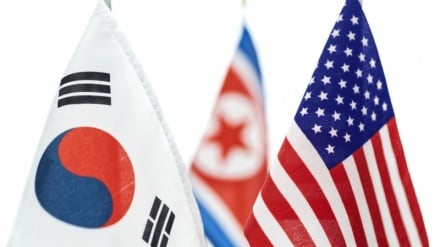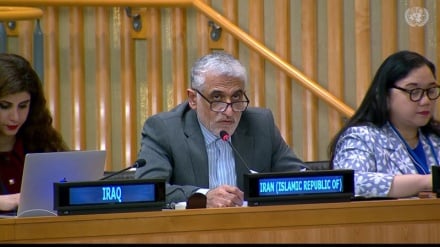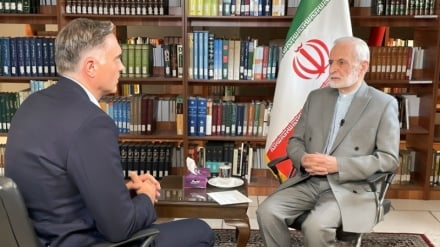CIA history of killing
Some of the most notorious of the CIA’s operations to kill world leaders were those targeting the late Cuban president, Fidel Castro.
Ever since the end of World War 2 and emergence of the US as a superpower, Washington has impudently indulged in state terrorism around the world, imposing sanctions and wars on independent states, and using its notorious spy network, the Central Intelligence Agency (CIA) to plot coups and kill leaders around the world. Iran was the prime victim of American adventurism when in 1953 the CIA along with Britain staged the August 1953 coup to topple the elected government of Prime Minister Dr. Mohammad Mosaddeq and restore the fugitive Pahlavi Shah to power.
Stay with us for an article in this regard by journalist Ewen MacAskill titled “The CIA has a Long History of Helping to Kill Leaders around the World.”
Some of the most notorious of the CIA’s operations to kill world leaders were those targeting the late Cuban president, Fidel Castro. Attempts ranged from snipers to imaginative plots worthy of spy movie fantasies, such as the famous exploding cigars and a poison-lined scuba-diving suit.
But although the CIA attempts proved fruitless in the case of Castro, the US intelligence agency has since 1945 succeeded in deposing or killing a string of leaders elsewhere around the world – either directly or, more often, using sympathetic local military, locally hired criminals or pliant dissidents.
According to North Korea’s ministry of state security, the CIA has not abandoned its old ways. In a statement on Friday, it accused that the CIA and South Korea’s intelligence service of being behind an alleged recent an assassination attempt on its leader Kim Jong-un.
The attempt, according to the ministry, involved “the use of biochemical substances including radioactive substance and nano poisonous substance” and the advantage of this was it “does not require access to the target (as) their lethal results will appear after six or 12 months”.
The person directly responsible was allegedly a North Korean working for the foreign intelligence agencies. A CIA spokesman refused to comment on the allegations.
But although such a claim cannot be dismissed as totally outlandish – given the long list of US involvement in coups and assassinations worldwide – the agency was forced to cut back on such killings after a US Senate investigation in the 1970s exposed the scale of its operations.
Following the investigation, then president Gerald Ford signed in 1976 an executive order stating: “No employee of the United States government shall engage in, or conspire in, political assassination.”
The executive order was partly out of embarrassment at the role of the CIA being publicly exposed – but also an acceptance by the federal government that US-inspired coups and assassinations often turned out to be counterproductive.
In spite of this, the US never totally abandoned the strategy, simply changing the terminology from assassination to targeted killings, from aerial bombing of presidents to drone attacks on alleged terrorist leaders. Aerial bomb attempts on leaders included Libya’s Muammar Gaddafi in 1986, and Serbia’s Slobodan Milosevic in 1999.
Earlier well-documented episodes include Congo’s first Prime Minister Patrice Lumumba of Congo, judged by the US to be too close to close to Russia. In 1960, the CIA sent a scientist to kill him with a lethal virus, though this became unnecessary when he was removed from office in 1960 by other means. Other leaders targeted for assassination in the 1960s included the Dominican dictator Rafael Trujillo, president Sukarno of Indonesia and president Ngo Dinh Diem of South Vietnam.
In 1973, the CIA helped organise the overthrow of Chile’s president, Salvador Allende, deemed to be too left wing: he died on the day of the coup.
The North Korean plot sounds crude. But intelligence agencies still resort to crude methods. The alleged North Korean plot recalls the assassination of the Russian dissident Alexander Litvinenko in 2006. A British inquest concluded he had been killed by the Russian intelligence agency using polonium hidden in a teapot.
The US has developed much more sophisticated methods than polonium in a tea pot, especially in the fields of electronic and cyber warfare. A leaked document obtained by WikiLeaks and released earlier this year showed the CIA in October 2014 looking at hacking into car control systems. That ability could potentially allow an agent to stage a car crash.
Recent failed North Korean missile attempts – as well as major setbacks in Iran’s peaceful nuclear programme – have been blamed on direct or indirect planting of viruses in their computer systems.
It is a long way from the crude, albeit imaginative and eventually doomed, methods employed against Castro. The US admitted to eight assassination attempts on Castro, though the Cuban put the figure much higher, with one estimate in the hundreds. Castro said: “If surviving assassinations were an Olympic event, I would win the gold medal.”
In his article Ewen MacAskill may have left out many other instances of CIA mischief around the world, including the toppling of Prime Minister Dr. Mohammad Mosaddeq in 1953, but there are many other instances of US state terrorism through its intelligence agency, such as complicity with the illegal Zionist entity in the murders of Palestinian leaders.
Another case is the killing of Swedish Prime Minister Olof Palme in 1986 because of his defence of many issues of the Third World including the chronic question of the Israeli usurped land of Palestine, which the US didn’t like.
Earlier on 6 September 1966 South Africa's Prime Minister Hendrik Verwoerd was assassinated in Parliament minutes before he was to announce a Canadian-style Confederation, which all the ethnic groups, especially the black African majority were in favour of, but which did not suit the major industrialists and the big western powers, including the US and Britain. The assassin was psychiatrist Solly Jacobson, who fled to London and there strangely was no extradition request.
The CIA hand was also evident in the supposed plane crash in what is now Zambia in Africa in 1961 that killed UN Secretary-General Sweden’s Dag Hammarskjold, who was on his way to finalize ceasefire in Congo, which the US and major European powers did not like. According to evidence the aircraft was shot down, and no inquiry or investigation was ever carried out.
There is also copious evidence the CIA was behind the overthrow of the Australian government of Gough Whitlam in 1975. It is routinely ignored in Australia but a little investigation into the background of Governor John Kerr, who unceremoniously dismissed him, reveals numerous CIA ties.
Last but not the least when New Zealand officially became a "Nuclear Free" zone in 1987, the possibility of assassination of Labour Party Prime Minister David Lange was considered by the CIA, but ultimately not carried out, because New Zealand is a member of the 5-Eyes Anglo War/Intelligence Alliance, and the NZ Peace Movement and Trade Unions were so media savvy and ahead of the game, that the US had no means of silencing it.
In an instance, the Worlds media were rushing to NZ. With amount of attention the country was getting especially in the English speaking World; there was no space for the US to carry out a secret false flag/assassination operation.
AS/EA


